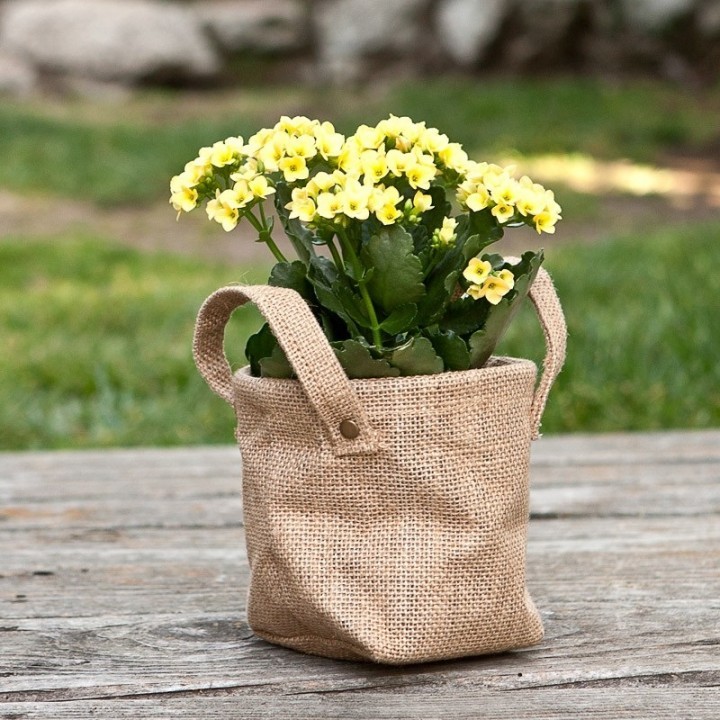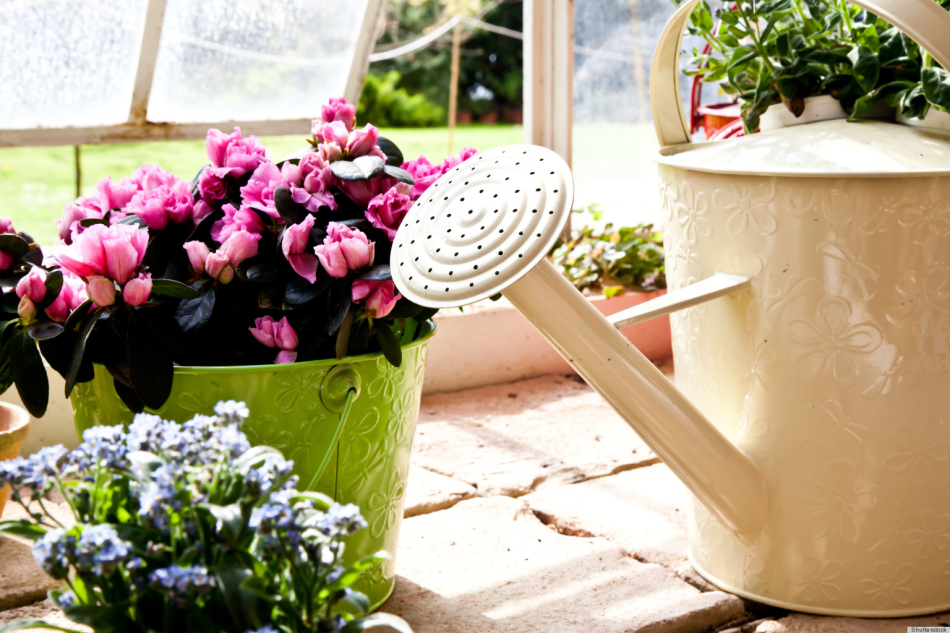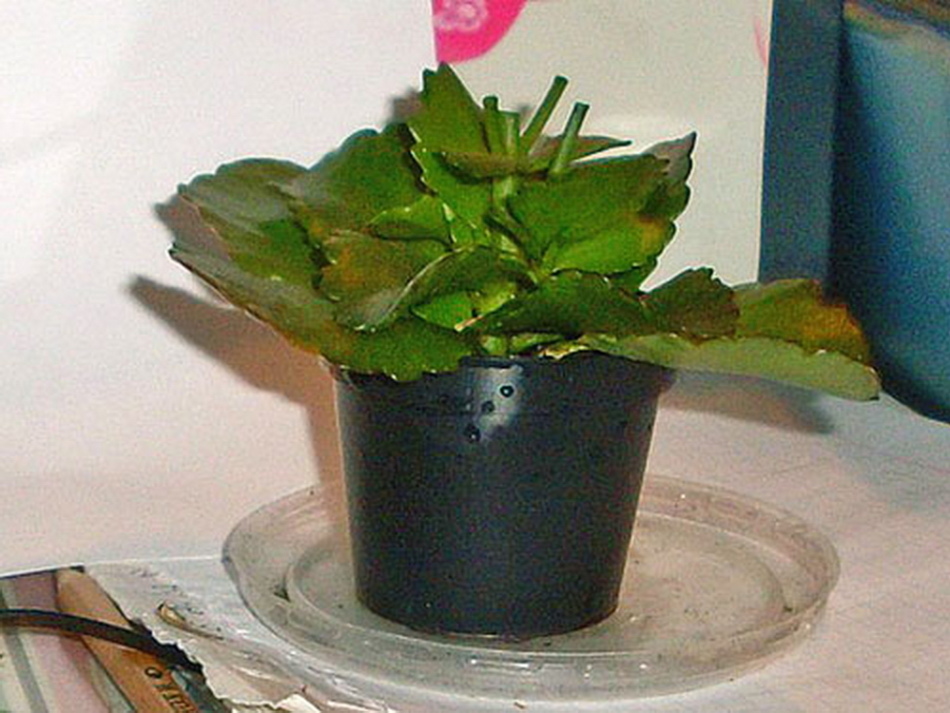Growing Kalanchoe at home. Signs and recommendations of Feng Shui.
Content
- What is kalanchoe blooming, how it looks, how it blooms: description
- Kalanchoe - is it possible to keep at home: the value of a flower, signs and superstitions
- How to water Kalanchoe in winter and summer at home?
- How to transplant the blooming Kalanchoe?
- What land is needed for Kalanchoe?
- How does the flowering Kalanchoe propagate?
- How to trim Kalanchoe after flowering?
- Why do kalanchoe turn yellow, twist, dry and fall leaves?
- Kalanchoe does not bloom and stretches up: what to do?
- Feeding Kalanchoe
- Where should the Kalanchoe flower stand on Feng Shui?
- Video: How to care for flowering Kalanchoe at home?
Plants in human life play different roles. They are medicine, and weeds, and pets. Among the latter, the hostesses are worthy of Kalanchoe.
It grows and gives long -term flowering in response to reasonable care and attentiveness. Although it is recognized as an unpretentious plant in terms of irrigation, fertilizer and transplantation.
Is it really - continue Understand the article.
What is kalanchoe blooming, how it looks, how it blooms: description

Kalanchoe in our latitudes is plant hybrids with Madagascar. It belongs to succulents, the Folstyankov family. In total, more than 200 species are known.
The maximum distribution and popularity was gained by Kalanchoe flowering varieties as:
- Blossfelda
- pinnate
- Daigremont
- single -fingered
External parameters of the plant:
- low up to 30 cm
- the leaves are large fleshy elastic, have an oval shape with a gear edge
- small flowers, connected to inflorescences
- flower shape - pipe with 4 petals
- during the flowering period, the surface of the plant is covered with a dense carpet
- gamma - from white to saturated red
Kalanchoe - is it possible to keep at home: the value of a flower, signs and superstitions

Kalanchoe has therapeutic qualities, useful for humans. Therefore, be sure to get this plant for yourself. It is quite patient and takes minimal care with gratitude.
As for the signs, they all have a positive meaning. Kalanchoe is not a magnet for dark forces, outbreaks of quarrels and abuse, disease and troubles.
Vice versa:
- kalanchoe absorbs heavy energy accumulated at the end of your work day
- cleans the aura at home, takes the negative from space
- contributes to the harmonization of relations in the family
- prompts a change in negative thoughts on positive
- gathering a family together for pleasant conversations
- if your Kalanchoe has bloomed, then the house reigns, good, peace and harmony
However, think if:
- your green pet suddenly began to fade and died, so he took on an external dark attack aimed at destroying the harmony of your family,
- he has been living with you for many years and does not bloom, which means that your family does not have sincerity, the depth of relationships, and is.
How to water Kalanchoe in winter and summer at home?

Since Kalanchoe is not picky the plant, it is not difficult to take care of it.
On the other hand, like any other green resident of your house, it is sensitive to an excess of moisture, cold, the complete lack of sunlight.
In the summer, water Kalanchoe moderately with the frequency of once a week.
- Choose the water that was settled in the room for a day.
- Avoid pour cold water from the tap under the roots of Kalanchoe.
- Leave the stem of the plant without moisture drops so that it does not provoke diseases.
- Perform the soil with moisture so that the water does not remain on the surface and in the pallet of the pot. In the second case, immediately pour it.
- Remember that Kalanchoe comes from the tropics, therefore it is easier to tolerate a short period of drought than an excessive amount of water in the soil. After all, he is inclined to accumulate moisture in his leaves and stems, which he uses in the dry period.
In winter, the frequency of watering reduce to 1.5-2 weeks.
- Gently lift the leaves before watering. Avoid the accumulation of water on them to avoid starting the processes of decay and disease.
- The amount of water for one watering is halved. It is better to wait for the complete drying of the soil in a pot with Kalanchoe and then pour than the addition of fluid to moist soil. So you will reduce the likelihood of freezing of the plant and its stress from the irrigation procedure.
- The water temperature should be not lower than the room in which Kalanchoe lives.
The general principle for watering at any time of the year is a good impregnation of an earthen coma, but without a bay.
How to transplant the blooming Kalanchoe?

Consider a number of parameters before the transplant:
- the diameter of the new pot choose a couple of centimeters more than the previous one
- plan the procedure for the end of March-Middle April and repeat every year
- save the composition of the soil to accelerate the adaptation of the plant
Procedure:
- fill a new pot with drainage and 50% soil
- gently remove Kalanchoe from the old pot. Leave its roots with an earthen lump
- install in the new flowerpot and add soil
- slightly compact the soil around the stem
- moderate the plant in a new pot
- feed it for a week until complete adaptation
What land is needed for Kalanchoe?

The ideal composition of the soil for transplanting and growing Kalanchoe at home is a combination of elements from equal whole and halves of parts. Namely:
- sheet humus, turf land and coarse -grained sand taken in equal entire fractions
- charcoal and brick crumbs - half
Use bone flour as fertilizer. It is enough 1 g per 1 liter of the soil mixture.
- Follow the acidity of the soil for Kalanchoe. The first is able to vary in the range of 5.0-6.5 pH.
- You can either buy a finished mixture in specialized stores, or prepare yourself. In the second case, additional sterilization is needed.
How does the flowering Kalanchoe propagate?

Blooming Kalanchoe is able to multiply in 2 ways:
- vegetative, that is, cuttings, leaves
- seeds
In the first case, choose:
- healthy material,
- the warm season, when the duration of the bright part of the day is not less than 12 hours and the temperature does not drop below +24 ℃,
- a well -lit place, but without direct sunlight.
In the second:
- another composition of the soil. It should be made of peat and sand taken in equal shares,
- regularly ventilated room with a temperature of at least +18 ℃,
- cellophane germination to germination of seeds. This usually happens 7-10 days after sowing.
How to trim Kalanchoe after flowering?

- Make sure all the flowers have been wrapped.
- Garden scissors remove the peduncle as lower to the roots. Then no fungi and mold are terrible to him.
- And also cut the extreme 2 sheets on each branch of the plant. In this way, you will stimulate the growth of Kalanchoe proper oval shape.
Kalanchoe should be cut not only after flowering, but after purchase and with preventive purposes.
Why do kalanchoe turn yellow, twist, dry and fall leaves?

The reasons for this phenomenon are somewhat depending on the nature and location of the affected leaves.
- If this is only the upper, then the plant lacks the light of the sun.
- If only the lower ones - you allowed the drying of the soil and have not watered Kalanchoe for a long time. And also, perhaps, under his pot is located too hot battery. Therefore, change his place for a cooler.
A few more reasons:
- cramped pot,
- the aging of the plant, which means the time has come to pinch its healthy shoots/leaves and take measures to rejuvenate,
- the defeat of aphids, if such a situation manifested itself in the summer, and the plant itself lives on the balcony or in your garden.
Kalanchoe does not bloom and stretches up: what to do?

First, determine the possible reason. It is:
- lack of sunlight, behind which the plant reaches out
- too long daylight hours, which is 12 or more hours
Outputs from this situation are also 2:
- rearrange the pot with Kalanchoe to the windowsill without neighbors, except for succulents,
- follow the duration of the day for the plant, cover it with opaque polyethylene in the evening until the morning.
Kalanchoe begins to form peduncles when:
- he has enough strength, that is, watering and top dressing normally
- he sees sunlight no more than 10 hours in a row
Feeding Kalanchoe
Choose ready -made fertilizers for succulents and reduce the dose recommended on the pack. So you feed Kalanchoe without harm to his health.
The frequency of fertilizers is once a month.
Another option is special complex nutritional mixtures for flowering plants. They are good for Kalanchoe, which delight the owners with bright colors.
Where should the Kalanchoe flower stand on Feng Shui?

According to Feng Shui, the best locations of Kalanchoe are:
- window sills in the southern part of the house,
- the extreme left corner of the dwelling is to attract abundance and wealth to the owners,
- the left corner from the computer monitor for those who work in the dark. The plant absorbs fatigue and replenishes the strength of the worker.
So, we examined the main stages of leaving the blooming Kalanchoe, the reasons for its drying and stretching up. We learned about the benefits and favorable signs from the presence of a plant in the house.
Make yourself Kalanchoe if you have not done this yet, and check in practice the power of its healing influence.







